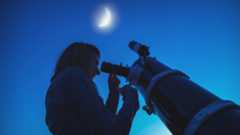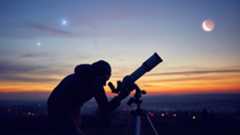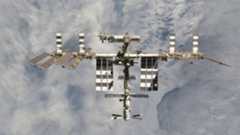Spectacular Auroras Dance Over Michigan in Time-Lapse Video
When you purchase through links on our site, we may earn an affiliate commission.Here’s how it works.

Amazing auroras light up the skies over Michigan in a stunning new time-lapse video.
"There are a few really rare combinations like aurora and lightning and aurora and fogbow kind of thing, or the big bursts in the auroral substorms that are all [high resolution] raw files," Malone wrote in an email to SPACE.com. [Watch the Amazing Aurora Video]
Best picks for you


The video also captures a few celestial surprises. Various planets, nebulas, the Milky Way, meteor showers and evenComet Pan-STARRS can all be spotted in the short film.
"In the climax of the video, the very bright aurora scenes, those are all very special," Malone said. "At our latitude of 46.5 degrees that kind of auroral activity doesn't occur nearly as frequent as say, latitudes around the Arctic Circle, I can count them on one hand in the past few years. In fact there were YEARS I went without seeing the aurora at all here in northern Michigan a few years back when there were absolutely no sunspots happening on the sun."
Auroras are created when charged particles from the sun enter Earth's upper atmosphere and strike neutral particles, creating the distinctive red and green glows of the northern lights. The cosmic light show is usually confined to the planet's higher latitudes because Earth's magnetic field tends to funnel these particles toward the poles.
Malone's part of Michigan might be seeing more auroras in the near future. The sunspot AR1748 has been extremely active lately, firing off four extremely powerful solar flares over the course of 48 hours from Sunday to Tuesday (May 12 to 14).
Breaking space news, the latest updates on rocket launches, skywatching events and more!
The first three of these X-class flares was unleased while AR1748 was facing away from Earth. But the sunspot is rotating toward Earth at present, and a huge eruption of solar plasma called a coronal mass ejection (CME) associated with the last flare, which occurred late Tuesday night, is slated to give Earth a glancing blow Friday (May 17).
CMEs that hit Earth can supercharge the northern lights, delighting skywatchers. But powerful ones can have negative consequences as well, spawning geomagnetic storms that temporarily disrupt power grids, GPS navigation and satellite communications.
You can watch a high resolution version ofMalone's amazing night sky views video via Vimeo.
Editor's note:If you have an amazing picture of the auroras or any other night sky view that you'd like to share for a possible story or image gallery, send photos, comments and your name and location to Managing Editor Tariq Malik atspacephotos@space.com.
Follow Miriam Kramer onTwitterandGoogle+. Follow us onTwitter,FacebookandGoogle+. Original article on SPACE.com.

Miriam Kramer joined Space.com as a Staff Writer in December 2012. Since then, she has floated in weightlessness on a zero-gravity flight, felt the pull of 4-Gs in a trainer aircraft and watched rockets soar into space from Florida and Virginia. She also served as Space.com's lead space entertainment reporter, and enjoys all aspects of space news, astronomy and commercial spaceflight. Miriam has also presented space stories during live interviews with Fox News and other TV and radio outlets. She originally hails from Knoxville, Tennessee where she and her family would take trips to dark spots on the outskirts of town to watch meteor showers every year. She loves to travel and one day hopes to see the northern lights in person. Miriam is currently a space reporter with Axios, writing the Axios Space newsletter. You can follow Miriam on Twitter.
























